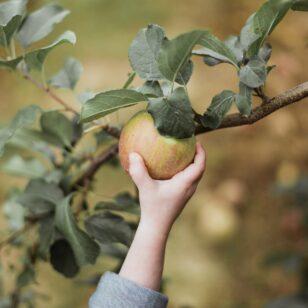
Executive Chef Gus Stieffenhofer-Brandson, Published on Main [Photo credit: Sarah Annand]
Ask the chef of a MICHELIN-Starred restaurant about the latest trends and chances are what you’ll get in response is a puzzled silence.
“I don’t pay attention to trends or follow trends,” says Gus Stieffenhofer-Brandson, executive chef at the MICHELIN-Starred Published on Main. “I just focus on what’s going around me.”
It makes sense — after all, any chef creative and passionate enough to earn a star is probably setting trends, not following them. Kissa Tanto’s Joël Watanabe, for instance, was way ahead of the curve on super-hot Itameshi, or Italian-Japanese fusion, and Burdock & Co’s Andrea Carlson was serving natural wines long before we all jumped on the natty bandwagon.
But step outside MICHELIN’s glittering constellation, and you’ll see a couple of interesting things happening on the restaurant scene.
There are, of course, always micro-trends — think of them as the “cronut” of the day, which right now is probably the pickle pizza — and macro trends, movements so big they are just how we dine now. Among the latter are vegetable-forward dining and low- and no-proof drinking.
In between, though, something a little unusual is going on.
Vish Mayekar, the head chef at Caffe La Tana and Pepino’s Spaghetti House, has noticed his customers falling into one of two categories. On the one hand, he says, people are extravagantly experiencing life to the fullest. “They say, let’s go out and eat all the good things.”
These diners go out all the time, order lots of different dishes, try new things and share everything so they can taste as many dishes — and drinks! — as possible.

[Photo credit: Destination Vancouver/Hubert Kang]
“The other side is the opposite,” he says. “They’re not going out as much and are keeping portions to themselves. They are not sharing. They are thinking of the economy and mindful of how they spend.”
And, he says, there’s really no overlap between the groups. Diners are one or the other.
Matthew Jacobsen, the head sommelier at MICHELIN-Recommended Botanist Restaurant, is seeing something similar.
“You have the two very distinct groups of people,” he says. One only wants the wine they know and love and always order — if they drink California Cabernet Sauvignon, they always drink California Cab, and nothing else. The other wants to try whatever is new and funky, the more unusual the grape, style or region, the better.
“And there’s a very big divide between them. You’re really one or the other.”
They peg it to two things. One, of course, is the pandemic, which has left some of us with a “live for the moment” attitude and others craving comfort and preferring to spend time with only close friends and family. The other is the uncertain economy , which has made some of us extremely value conscious and others reckless about money.
In a weird way it’s as if we are living through the hedonism and “anything goes” excess of the Roaring Twenties at the exact same time as the spendthrift ways of the Dirty Thirties.
Luckily, Vancouver’s restaurants can as easily dish up a comforting meal in a cozy space as they can serve cutting-edge, experimental dining experiences.

[Photo credit: Destination BC/Hubert Kang]
Most of all, we care deeply about supporting our growers, producers and winemakers, especially after the last year’s devastating impact of heat waves, wildfires and winter kill.
“I would say that people are paying a lot more attention to where their food is coming from,” says Stieffenhofer-Brandson. “The whole farm-to-table thing just makes sense.”
















